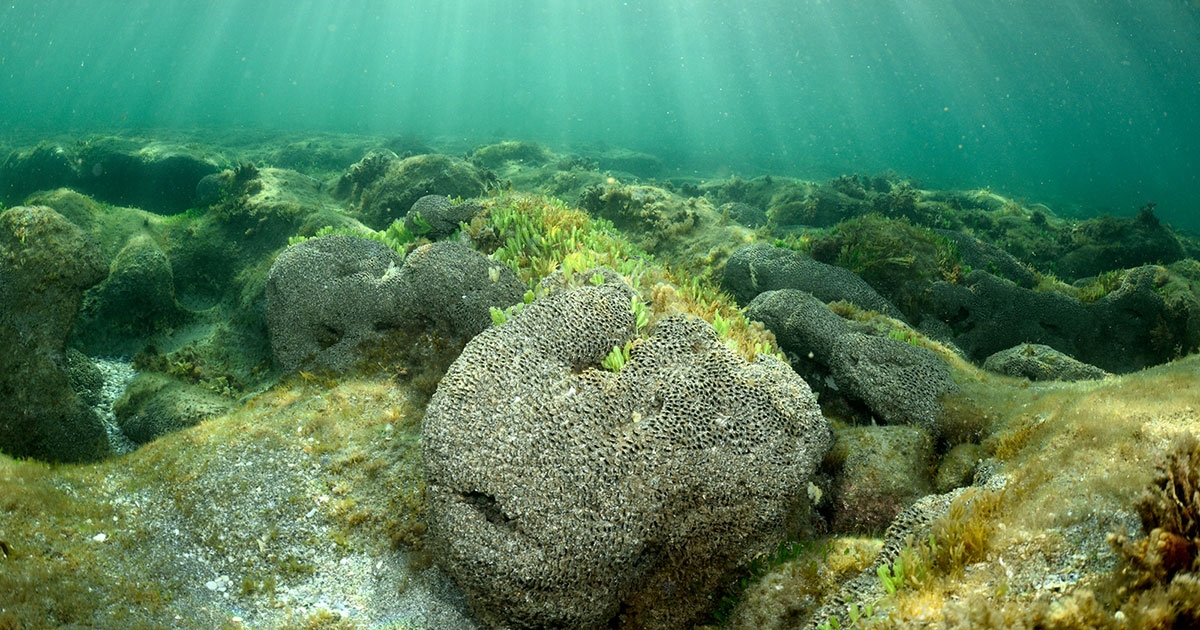
“Islands in the Sand” – a Book on Florida’s Nearshore Hardbottom Reefs Co-authored by CSA’s Dave Snyder
CSA ichthyologist David B. Snyder has lately been sharing a “Fish Blog” with insightful and entertaining fish tales accompanied by dazzling underwater photographs captured during his prolific diving career and sojourns. This blog recognizes David’s contribution to the new book “Islands in the Sand: Ecology and Management of Nearshore Hardbottom Reefs of East Florida” in which David and his co-authors, Dr. Daniel A. McCarthy (Jacksonville University), Dr. Kenyon C. Lindeman (Florida Institute of Technology), and Dr. Karen G. Holloway-Adkins (East Coast Biologists Inc.), integrate their decades of knowledge and experience with more than 1250 technical references to capture the story of the distinctive nearshore hardbottom reef habitats of eastern Florida and the organisms that rely on them.
Stretching for 450 km along the length of Florida’s east coast from Miami to St. Augustine in water depths of 0 to 4 m, nearshore hardbottom reefs made of coquina rock and living worm rock are used by more than 1150 species of fish, invertebrates, algae, and sea turtles. In addition to their importance as habitat for marine plants and animals, the features also protect our shorelines from storms and offer a range of recreational opportunities for coastal citizens and visitors. The nearshore hardbottom reefs are surrounded by sediments that are continually redistributed by waves and tides, which bury and uncover the hardbottom features; hence the name “islands in the sand”.
The authors have captured the physical and geological characteristics of the hardbottom reefs as well as dedicated chapters to the diverse taxonomic groups of plants and animals which rely on and are important to the coastal ecosystems of Florida. In a chapter on management of these resources, the stressors and disturbances which affect hardbottom reefs (both human-caused and natural) are described. Importantly, details on mitigation, conservation, monitoring, and management are also presented, as well as opportunities for future research to better understand these unique habitats.
Complemented by dozens of color photographs, maps, figures, tables, and a glossary, this book will appeal to scientists, agency personnel, beachfront residents, and enthusiasts of our unique coastal Florida environment.
Dr. McCarthy and Dr. Lindeman presented aspects of the book, its maps, and its images in January 2021 as part of the Florida Oceanographic Center Lecture Series. Dr. McCarthy and Dr. Holloway-Adkins also presented in February 2021 during Harbor Branch Oceanographic Institute’s Ocean Science Lecture Series. Please visit the links below to view these informative lectures.
https://www.floridaocean.org/coastal-lecture-series
Support the book and its authors.
CSA is proud to support David in this endeavor, and we continue to support mapping and monitoring efforts to study nearshore hardbottom reefs and the artificial reefs installed to complement natural reefs. For more information on CSA’s work in the nearshore zone, please visit our Ports and Coastal Sciences webpage.
Corporate Headquarters
8502 SW Kansas Ave.
Stuart, FL 34997

